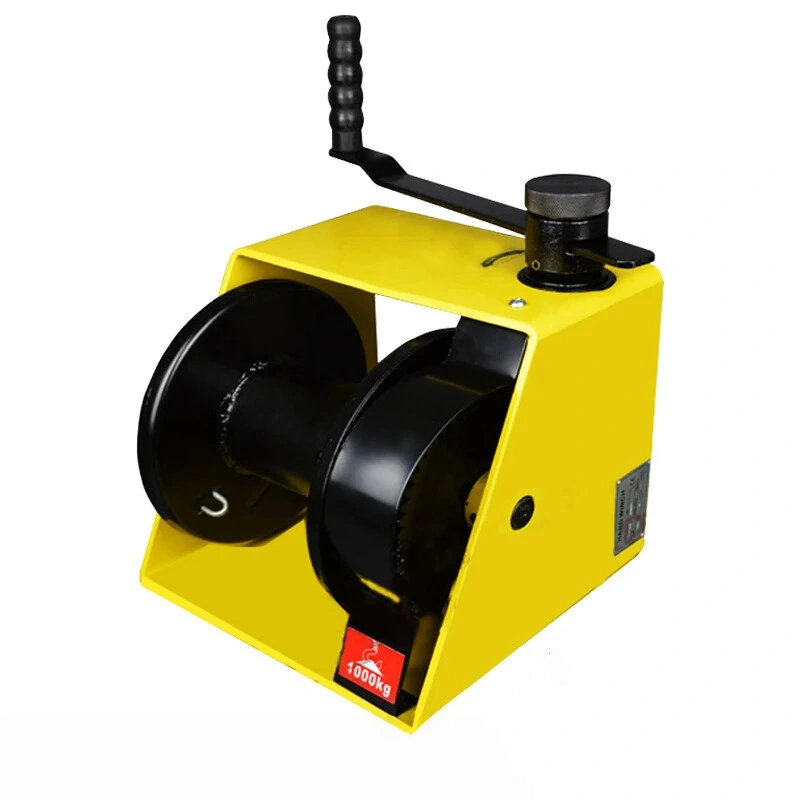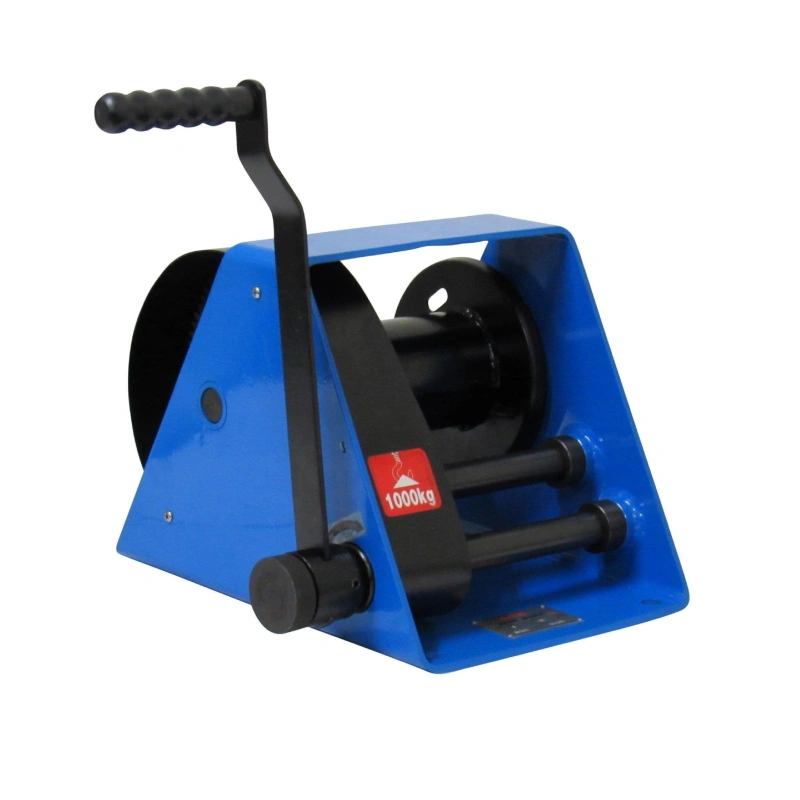When you tackle off-roading challenges, a snatch block vehicle recovery technique can make winching safer and more effective. Using a snatch block reduces the strain on your winch and helps control the direction of the pull. Safety should always come first.
Failing to secure tie-down points or using makeshift hardware can turn anchor points into dangerous projectiles. Never touch the winch rope or hook while under load, and always stay clear of the line to prevent injury.
Key Takeaways
A snatch block increases your winch’s pulling power and allows for better control of the direction during vehicle recovery.
Always inspect your snatch block and winch before use to ensure safety and prevent equipment failure.
Use rated gear and proper anchoring techniques to avoid dangerous situations during recovery operations.
Employ winch blankets to reduce the risk of injury from cable recoil if the winch line snaps.
Choose a snatch block rated at least 50% higher than your winch’s capacity for safe and effective operation.
Snatch Block Basics
What Is a Snatch Block?
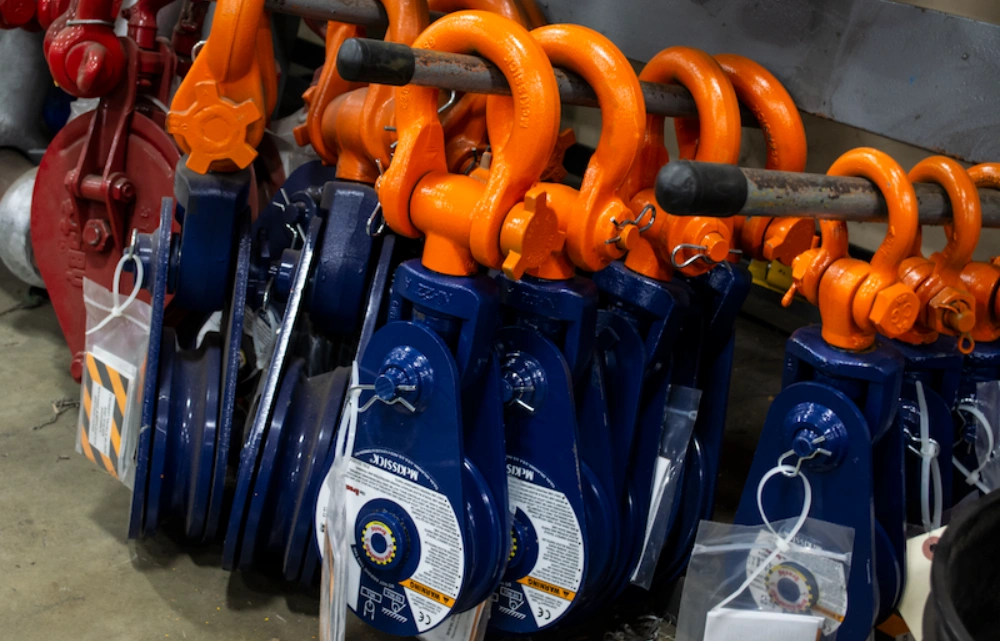
A snatch block is a heavy-duty pulley encased in a robust metal shell. You use it to change the direction of a winch cable or rope and to increase the pulling power during snatch block vehicle recovery.
The block features a side plate that opens, allowing you to insert the rope without threading it through the entire length. This design makes it easy to set up, even in challenging conditions.
Powerful Machinery manufactures certified snatch blocks built for demanding environments. Their products, such as the Snatch Block With Hook, Snatch Block With Shackle, Tail Board Snatch Block, and Snatch Block Shackle, use forged alloy and heat-treated steel for maximum durability.
Each block undergoes rigorous testing to meet international safety standards, ensuring you have reliable equipment for every recovery.
Main Uses in Vehicle Recovery
You rely on a snatch block to gain a mechanical advantage and control the direction of your pull. Here’s how it helps:
A snatch block increases the mechanical advantage by creating a three-point motion.
It changes the direction of the cable, reducing the force needed to pull heavy vehicles.
You achieve a more efficient winching process and reduce strain on anchor points.
In vehicle recovery, you use a snatch block in several scenarios:
Increase the pulling force of your winch.
Redirect the winch cable to pull a stuck vehicle from different angles.
Two stranded vehicles along the road.
Change the angle and direction of a pull during heavy-duty recoveries.
Tip: When direct pulling is not possible, attach the snatch block to the stuck vehicle. This lets you redirect the force and recover the vehicle safely.
Powerful Machinery offers a range of snatch blocks to suit different needs. The Snatch Block With Hook and Snatch Block With Shackle provide versatility for most off-road situations.
The Tail Board Snatch Block and Snatch Block Shackle offer specialized features for industrial and marine recovery. Each product combines strength, safety, and ease of use, making them essential tools for any recovery kit.
Equipment for Snatch Block Vehicle Recovery
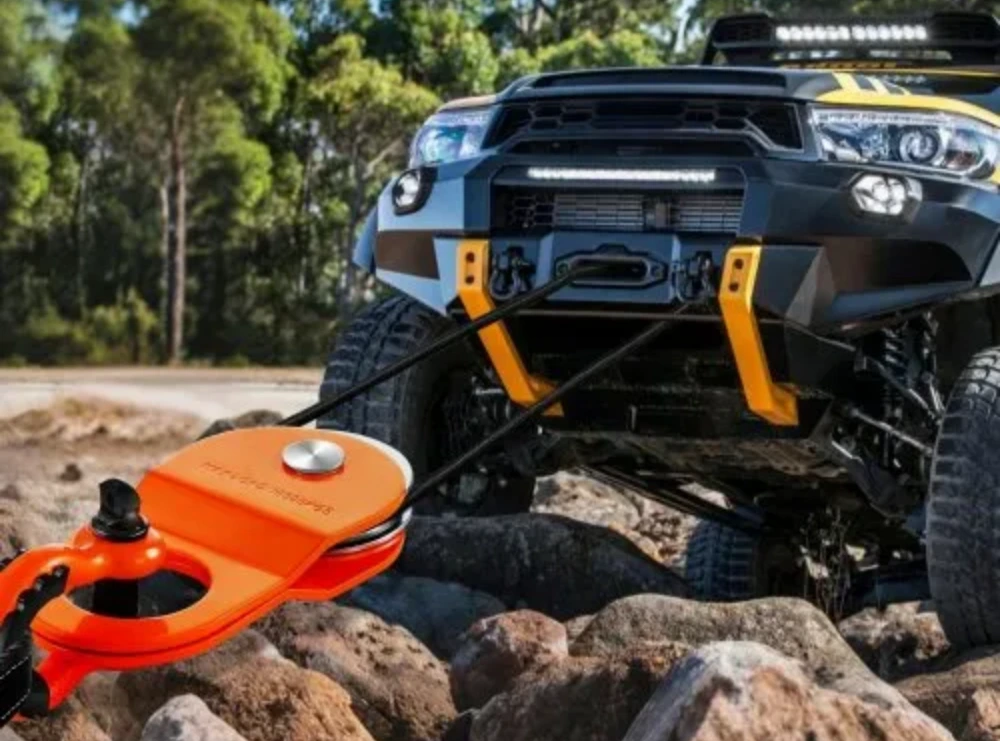
Essential Gear Checklist
When you prepare for vehicle recovery, you need to assemble a reliable kit. Industry experts recommend the following essential gear for safe and effective snatch block operations:
Winch: Select a winch that matches your vehicle’s weight and recovery needs.
Snatch block: Include a snatch block in your kit to increase pulling power and redirect force. Popular types are the 9-ton, Mega, and Ultra Snatch Blocks. The Ultra Snatch Block works best with synthetic winch lines, while the 9 Ton and Mega suit steel cables.
Shackles: Use rated shackles to secure the snatch block and anchor points.
Tree straps: Protect anchor trees and distribute force evenly.
Winch blankets: Place these over the winch line to reduce recoil risk if the line snaps.
Gloves: Wear heavy-duty gloves to protect your hands during setup and operation.
Powerful Machinery offers snatch block products designed for durability and safety. Their Snatch Block With Hook, Snatch Block With Shackle, Tail Board Snatch Block, and Snatch Block Shackle meet international standards and provide reliable performance in demanding conditions.
Tip: Always inspect your gear before each recovery. Replace any worn or damaged components to maintain safety.
Choosing the Right Snatch Block
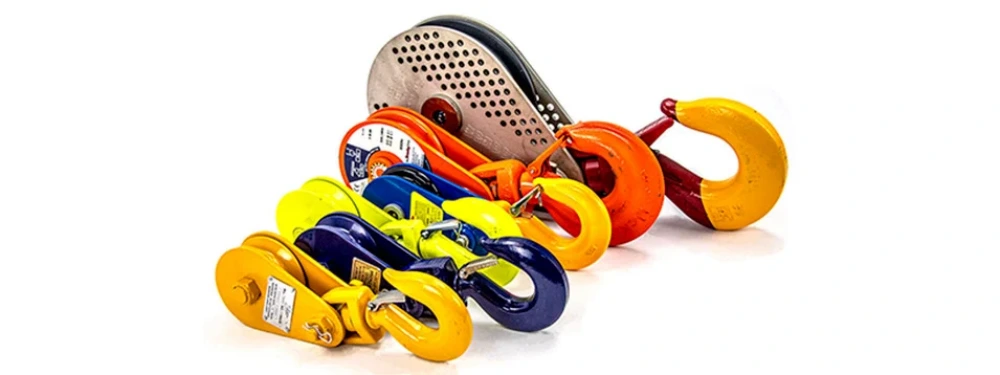
Selecting the right snatch block for your winch setup requires careful consideration. You should match the snatch block’s capacity to your winch line and recovery scenario.
Choose a snatch block rated at least 50% higher than your winch’s capacity for double line pulls. This ensures safe operation and prevents equipment failure.
Consider these key factors:
Purpose: Use a snatch block to increase your winch’s pulling force and redirect the cable’s force.
Mechanical advantage: A snatch block can double the winch’s pulling power in specific configurations.
Versatility: Snatch blocks allow you to recover vehicles from different angles, making them valuable in challenging situations.
Powerful Machinery’s range includes options for synthetic and steel winch lines, with capacities suitable for off-road, industrial, and marine recovery. Their products feature forged alloy construction, heat-treated components, and compliance with global safety standards.
You can select the right snatch block for your needs by considering load rating, rope compatibility, and the recovery environment.
How to Use a Snatch Block?
Assessing the Recovery Situation
Before you begin any snatch block vehicle recovery, you must assess the situation carefully. This step ensures you select the right technique and equipment for the job. Rushing or skipping this phase can lead to dangerous mistakes. Review the table below for common errors during the assessment phase:
Mistake | Description |
|---|---|
Improperly joining straps | Joining two snatch straps incorrectly can lead to failure, with dangerous consequences. Only loop the two straps together with the dowels to prevent fusing. |
Using inadequate recovery points | Factory tie-down points are not designed for load-intensive recovery and can break, causing injury. |
Rushing the recovery process | Rushing can lead to mistakes; always assess the situation and ensure all recovery points and methods are safe before proceeding. |
You should always check the terrain, the position of the stuck vehicle, and the available anchor points. Never use factory tie-downs as recovery points. Choose only rated recovery points or tree straps. Take your time to plan the safest and most effective approach.
Tip: Inspect all your gear, including your snatch block, winch, and shackles, before starting. Look for signs of wear or damage.
Double Line Pull Method
The double line pull method is one of the most effective ways to increase your winch’s pulling power during snatch block vehicle recovery. This technique doubles the pulling capacity of your winch, making it ideal for extracting a stuck vehicle in tough conditions.
For example, if your winch is rated for 2,500 lbs, a double line pull allows you to pull up to 5,000 lbs. However, this method also reduces your rope length and line speed by half.
Follow these steps to set up a double line pull:
Pre-Use Inspection: Examine your snatch block for any defects. Make sure the latch and locking pin work smoothly. Check the sheave and side plates for damage.
Rigging and Setup: Attach the snatch block’s hook or shackle to a stable anchor point, such as a tree strap or rated recovery point. Run the winch line through the snatch block, ensuring it sits against the solid side plate. Close the latch and secure the locking pin.
Executing the Pull: Use clear hand signals with your team. Keep everyone clear of the winch line. Monitor the system throughout the operation.
Recovery and Storage: Release tension slowly after the stuck vehicle is free. Inspect the snatch block for any damage. Store it properly for future use.
Safety Check: Always use winch blankets to weigh down the line. This reduces the risk of injury if the line snaps.
Powerful Machinery’s Snatch Block With Hook and Snatch Block With Shackle are excellent choices for this technique. Their forged alloy construction and fatigue-rated design ensure safe and reliable performance in demanding off-road recovery scenarios.
Directional Pull Method
Sometimes, you cannot pull a stuck vehicle in a straight line. The directional pull method lets you change the direction of force, making it easier to recover vehicles from tricky angles. This technique is especially useful in off-road recovery when obstacles block a direct path.
To perform a directional pull, follow these steps:
Park your recovery vehicle or secondary anchor on flat, stable ground.
Set up the snatch block as you would for a double line pull. Thread the winch line onto the snatch block and attach it to your recovery point using a tree strap.
Instead of running the line back to your winching vehicle, run it to your secondary recovery point and secure it.
Place winch blankets over the line to prevent damage if a connection fails.
Engage the winch clutch.
Begin winching in, keeping a close watch on the system.
Note: Always ensure your snatch block is rated for the intended load. Inspect it for damage or wear before use. Wear gloves and eye protection for added safety.
The Tail Board Snatch Block and Snatch Block Shackle from Powerful Machinery offer robust solutions for directional pulls. Their easy rope insertion and high load ratings make them ideal for complex recovery situations.
Multiple Snatch Blocks
In some cases, a single snatch block may not provide enough mechanical advantage or control. Using multiple snatch blocks allows you to maximize pulling power and maneuverability during snatch block vehicle recovery.
This approach is valuable when you need to extract a stuck vehicle from a difficult position or navigate around obstacles.
You can use multiple snatch blocks in several ways:
Increase winch capacity by doubling the pulling power with a single snatch block attached to the stuck vehicle or anchor point.
Change the direction of pull for optimal recovery when a straight pull is not possible.
Create a double-line pull with two snatch blocks to significantly enhance pulling power for tough extractions.
Set up dual-angle pulls by placing two snatch blocks at different anchor points. This gives you precise control over the direction of pull, helping you maneuver the stuck vehicle out of tight spots.
Use two snatch blocks to increase the force applied when lifting heavy objects, which is useful for clearing obstacles during recovery.
Redirect force around obstacles, ensuring safe and efficient recovery of a stuck vehicle.
Tip: Always use snatch blocks and shackles that meet or exceed the working load requirements for your recovery vehicle and winch. Powerful Machinery’s certified snatch blocks provide the strength and reliability needed for these advanced techniques.
By mastering how to use a snatch block in these configurations, you can handle even the most challenging off-road recovery scenarios with confidence and safety.
Snatch Block Safety Tips
Load Limits and Rated Gear
You must always use certified, rated gear for snatch block vehicle recovery. Exceeding the working load limit (WLL) can lead to catastrophic equipment failure. When you overload a snatch block or winch, you risk metal fatigue, deformation, and sudden breakage. These failures can cause severe injuries or even fatalities.
In one well-documented case from the NIOSH FACE Program, a forklift operator was fatally injured after the forklift tipped over due to an uneven load. The operator had not accounted for the shifting center of gravity and the combined weight of the load, exceeding the working load limit of the equipment.
Ignoring WLL guidelines can result in dropped loads, damaged property, and serious injuries.
Overloading leads to accelerated wear, metal fatigue, and component deformation.
Such incidents can cause severe injuries, fatalities, and extensive damage to valuable materials or machinery.
Always select a snatch block rated at least double the pull of your winch. Match the sheave size to your rope diameter. Powerful Machinery snatch blocks display clear WLL markings, making it easy for you to verify capacity before every recovery.
Anchoring and Shackle Use
Proper anchoring is essential for safe snatch block vehicle recovery. Choose anchor points that can handle the load, such as tow hooks, frame-mounted recovery points, or buried deadman anchors.
Avoid using bumpers, tie-down points, or suspension components. When you use trees, always protect them with tree saver straps.
Shackle Type | Rated Capacity |
|---|---|
Super Champion (Single Sheave) | 20 to 150 Ton |
Light Champion (Double Sheave) | 4 to 12 Ton |
Champion (Single Sheave) | 12 to 15 Ton |
All Alloy Snatch Block (Single) | 12 Ton |
Inspect all shackles and connections before each use. Secure the snatch block and pulley, and ensure the anchor point is stable. Powerful Machinery offers a range of shackles and snatch blocks designed for demanding vehicle recovery.
Winch Blankets and Line Safety?
Winch blankets play a critical role in protecting you during snatch block vehicle recovery. Draping a blanket over the winch line dampens movement and reduces the velocity of cable recoil if the line snaps.
The winch blanket damper prevents uncontrolled recoiling of the cable or rope during failure.
Its weighted design helps absorb and disperse energy, reducing injury risk and property damage.
Winch blankets help control cable whip effects, minimizing danger to individuals and property.
Before every recovery, inspect your winch line for frays, kinks, or damage. Use gloves and keep bystanders clear of the danger zone around the stuck vehicle. Regularly maintain your snatch block by cleaning, lubricating, and checking for wear.
Powerful Machinery snatch blocks feature pressure lube fittings and easy-to-inspect components, making maintenance straightforward.
Conclusion
Using a snatch block correctly makes your vehicle recovery safer and more efficient. You gain mechanical advantage, reduce winch strain, and control the direction of your pull. Always follow these best practices:
Inspect your winch and snatch block before use.
Wear protective gear and stand clear of cables.
Operate the winch smoothly and use a dampener for safety.
Communicate clearly with your team.
Benefit | Description |
|---|---|
Increased pulling power | Handle heavier loads with less winch strain. |
Enhanced safety | Protect yourself and bystanders during recovery. |
Versatile recovery options | Tackle tough angles and obstacles easily. |
Choose certified snatch blocks from Powerful Machinery to ensure reliability and safety every time you recover a vehicle.
FAQ
How do you choose the right snatch block for your winch?
You should match the snatch block’s working load limit to your winch’s capacity. Always select a block rated higher than your winch. Check rope compatibility and ensure the block meets industry standards. Powerful Machinery offers options for various winch sizes and rope types.
Can you use a snatch block with both synthetic and steel winch lines?
Yes, you can use a snatch block with both types of winch lines. Always check the manufacturer’s recommendations. Powerful Machinery snatch blocks support synthetic and steel cables. Inspect the sheave for smooth operation and avoid sharp edges that could damage your line.
How often should you inspect your snatch block?
Inspect your snatch block before every use. Look for cracks, deformation, or worn bearings. Clean and lubricate moving parts regularly. Replace any damaged components immediately. Routine checks help you maintain safety and extend the life of your equipment.
What maintenance does a Powerful Machinery snatch block require?
Clean your snatch block after each use. Lubricate the bearings using the pressure lube fittings. Store it in a dry place. Regular maintenance ensures smooth operation and prevents corrosion. Follow the manufacturer’s guidelines for best results.
Are the Powerful Machinery snatch blocks certified for safety?
Product Type | Certification |
|---|---|
Snatch Block With Hook | ISO, ASME, TUV |
Snatch Block With Shackle | ISO, ASME, TUV |
Tail Board Snatch Block | ISO, ASME, TUV |
Snatch Block Shackle | ISO, ASME, TUV |
All Powerful Machinery snatch blocks meet or exceed international safety standards. You can trust their certifications for reliable performance.

